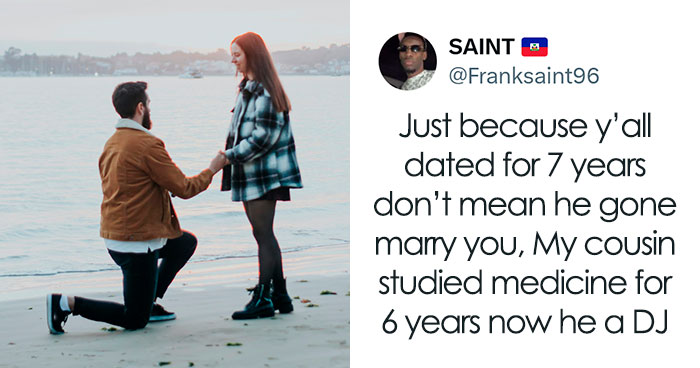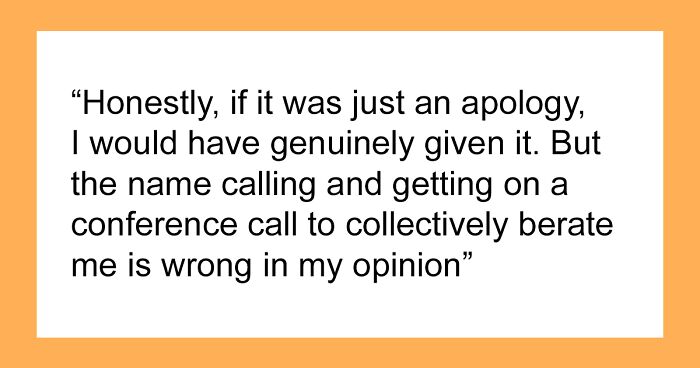
Welcome To The ‘Perfume Islands,’ One Of The Most Beautiful Yet Least Visited Countries In The World
You’ve probably heard of Seychelles, a picture-postcard tropical paradise in the Indian Ocean, just off the coast of East Africa.
The same goes for nearby Mauritius, another quintessential honeymoon destination known for its palm-fringed white beaches and colorful coral reefs.
And who could forget Madagascar, the big brother of the family? Home to many of the world’s most unique flora and fauna, the ‘eighth continent’ is a paradise for wildlife lovers. There are at least 88 species of Lemur on Madagascar alone!
But what if I was to tell you that there was another country in this beautiful part of the world, one that rarely gets a mention as a travel destination? Like its neighbors, this country also boasts palm-fringed white sands, colorful coral reefs and an incredible diversity of wildlife.
Lemurs live here too – the only population of wild lemurs outside Madagascar thrives on these islands.
I’m talking, of course, of the Comoros Islands.
Image credits: Oli Benet
“Where?” I hear you say. And well you might, because this small island nation between Mozambique and Madagascar is one of the least visited countries in the world, tempting no more than 3,000 visitors a year to its isolated and mysterious shores.
Traveling here isn’t exactly easy, but it is a real adventure!
The best way to get to Comoros is to fly via Kenya or Ethiopia. The international airport is on the ‘main’ island of Grande Comore (Ngazidja), where you can find the capital city, Moroni. On arrival you’ll immediately notice Mt. Karthala, a massive, active volcano that dominates the landscape and last erupted in 2007, leaving jagged scars of black rock and lava fields across the island.
Most travelers choose to continue on to the next island of Moheli (Mwali), the jewel in the Comoros crown. Moheli is the smallest island of the three and also the most beautiful – it is lush and green and has that laid back, tropical paradise feel to it. It is also the home of Laka Lodge, which is far and away from the best place to spend the majority of your time in the country.
So this is what we did.
The flight was short and scenic, we even managed to spot a school of humpback whales along the way! Their huge, ghostly silhouettes were easily visible from above through the crystal clear waters.
Just 20 minutes later, we arrived at the tiny airport in Fomboni, the capital of Moheli.
We are picked up by the ever-smiling Abdou, the driver at Laka Lodge. “How long will it take to get there?” I ask. “Oh, about half an hour,” he says with a grin.
Two hours later, we arrive.
This is the first of many instances of ‘island time’ we would encounter, life just hums along to a different beat here.
No stress, no worries, just go with the flow.
The lodge itself has the most incredible setting. Perched on the edge of the nearby village of Nioumachoua, it has a gorgeous private beach and an intimate, cozy feel.
There are just a handful of small beachfront bungalows among the palm, papaya, and fragrant ylang-ylang trees.
The local lemurs visit a certain bamboo tree every day at around sunset, waiting to be fed bananas by visitors. Giant bats hang lazily off the branches, feasting on whatever fruit they can find and colorful hummingbirds flutter about, drinking nectar from the thousands of blooming flowers on the grounds. It’s pretty nice!
The bungalows themselves are basic but comfortable, and all power is generated by solar. Sustainability is central to everything Laka Lodge does.
Image credits: Oli Benet
Image credits: UnderVisionPro
We weren’t too disappointed though, because turtles are nesting all year round and can be found everywhere. Upon hearing this, we headed straight out to the beach with our snorkels and lazily followed a few around for the afternoon. This would quickly become a daily routine!
The shores of Moheli are the second-largest turtle nesting area in the Indian Ocean, and Laka Lodge is happy to organize excursions to go and see the giant creatures laying their eggs. It is truly a humbling experience.
Image Credits: Laka Lodge
We were never made to feel out of our depth, however (pun intended), and completed our PADI Open Water Course with help from Anne, the most amazingly warm, encouraging and patient divemaster you could ever ask for.
Soon we were being taken by boat to the uninhabited outer islands of the marine park, including the eerily named Leprosy Island (the remains of a former Leper colony still spookily remain) and Bird Island, onto which hundreds of thousands of Boobies and Cormorants have deposited tons of stinking white guano.
We are dropped onto dive sites with evocative names like ‘Shark Passage’ and ‘Magic Rock,’ and take our first certified dives in some of the richest and healthiest coral in the Indian Ocean. We see giant trevallies, tuna and grey sharks, hideously ugly moray eels with their dinosaur-like array of teeth, and best of all, manta rays.
Image credits: UnderVisionPro
They appear as giant shadows in the distance, barely visible through a vast cloud of golden, sparkling plankton. This is, of course, why the mantas are here.
They turn ominously in our direction, like aircraft on a bombing run, and begin hoovering through the shimmering sea dust with their vast mouths wide open. The sight of these silent, graceful giants face-to-face, gliding silently on a collision course before coasting just beneath our masks, is at once thrilling and slightly terrifying, even though we are well aware that they are completely harmless.
We remain ensconced in the plankton cloud for around 30 minutes, feeling their tiny bites whilst watching the methodical back and forth of the mantas.
Just magical!
At low tide it is possible to penetrate deep into the mangroves, carefully picking a path through the ghostly roots which appear like bony fingers reaching down into the soft, viscous earth.
At their edge, on firmer ground, the ground is pockmarked by hundreds of small burrows.
If you stand still long enough, you are rewarded by the sight of spider-like legs emerging, followed by a giant shell, beady eyes and menacing claws. These are coconut crabs, armored beasts that can grow up to three feet across and weigh nine pounds. They like to scuttle about amongst the mangroves, searching for food.
Scary as they look on the outside, these creatures are skittish and shy, shaking their fists and threatening to disappear straight back into their holes if you approach any closer.
“I’ll do it! One more step and I’m gone, buddy.”
And then there’s Nioumachoua, the village next to the lodge. It is small and compact, with just a couple of thousand inhabitants, and it is the warmest and most welcoming place you could possibly imagine.
In just a few days I was lucky enough to be invited to join the local football team, watch a special bare-knuckle boxing event called a Mrengue and have dinner at somebody’s house. The staff at Laka Lodge are all locals and are happy to integrate you into the local life, and you’ll be greeting people in Shikomori (the local language) in no time.
Dje Dje!
Keep in mind that Comoros is an Islamic country and there some local customs that you should respect. In terms of dress, men are encouraged to wear trousers when in public. Shorts are fine on the beach and during sports activities, however.
Women should cover their shoulders and legs in public, but a headscarf is not necessary. While local fashion is conservative in terms of not showing bare skin, in terms of color and style it is anything but!
Alcohol is not served anywhere in the country except for Laka Lodge and a couple of bars in Moroni, the capital city.
People will greet you with smiles and curiosity – they are happy to have Laka Lodge as part of their community because it brings outside investment and opportunities. It has become the largest private employer on the island and works hard to train people to work in the tourism industry.
Sadly, there are still major economic and political difficulties in Comoros as a whole. There is a severe lack of jobs, basic services like electricity often disappear for days at a time and people complain of a corrupt and useless national government.
Ways to make an honest living are few – not a great deal beyond fishing, farming or backbreaking work in the mountains picking cloves for a few pennies.
There are many sad and unfair reasons why Comoros has become one of the poorest nations in the world, but here in Nioumachoua the people look out for each other, share and communicate with genuine warmth, and greet each other with big smiles and open hearts.
While material wealth might be lacking, the sense of community here is incredibly strong and nobody ever gets left behind.
While you are here, there is a good chance that there is a wedding going on. Weddings can last for many days and involve pretty much the whole village – the parties go on long into the night. In the picture above you can see a party van making its way through the village, pumping upbeat music and accepting gifts of cash, furniture and other household items.
You’ll often notice the ladies walking the streets wearing white or yellow facemasks. This is a mix of powdered coral and sandalwood that protects them from the sun and, according to my friend Abou, “keeps them looking young and beautiful.”
In terms of food, I hope you like fish! The catch is fresh and plentiful, with yellowfin tuna and barracuda particular favorites. Laka Lodge serves up an amazing variety of local dishes daily – with imaginatively spiced dishes like fish pies and curries, octopus stews and grilled meats.
Meals are accompanied by plantains, potatoes, rice or yams, and there is always plenty of fresh fruit and homemade ice cream for dessert.
Breakfasts are pancakes with homemade jam, eggs and local coffee fresh from the surrounding mountains. Delicious!
And as for alcohol… as mentioned earlier, it’s simply not a part of the culture of the islands and is almost impossible to find. However, Laka Lodge imports wine and the most amazing Madagascan beer, so you can enjoy a cold one with your evening meal whilst trying to identify all the fish you saw during your dive.
We also spent some time walking through the lush tropical forests in search of one of the world’s largest species of bat – the Livingstone. This species is incredibly rare and lives only on Moheli and the neighboring island, Anjouan. There are thought to be around only 2,000 Livingstones left in the whole world.
Image credits: Oli Benet
As we set off in search of these enigmatic creatures, climbing steadily uphill into the misty and mountainous interior, we passed an astonishing diversity of flora along the way.
Large cacao pods are left to rot forlornly on the branch and coffee bushes flourish, bearing fruits enticingly wild and unpicked. Cash crops such as these are mainly remnants of plantations from French colonial times, although some locals do pick, dry and roast the coffee beans for themselves. They make for a really smooth and tasty brew!
A narrow, muddy path snakes its way between banana and pineapple plantations and has to be carefully navigated to avoid the ubiquitous coconut shells, littered across the ground as far as the eye can see. There is bulbous papaya, clustered at the top of the tall, narrow trunks to which vanilla vines cling, and aromatic peppercorns dangling in fist-sized bunches here and there, just waiting to be picked.
In terms of aroma, however, two plants dominate. Cloves are simply everywhere, growing in abundance and set out to dry in the sun in village squares and on roadsides. That sweet, familiar smell of a nice cup of chai (or perhaps the dentist if you prefer) hits your nose sharply whilst driving through a village with the window down. Just lovely!
Cloves are a vital source of income for many families, who sell them by the kilo to the local businessmen for export. Cloves, vanilla, and cinnamon are the main exports for this small country, but enterprising chocolatiers and coffee sellers could find opportunities here too.
The other major export is ylang-ylang, a fragrant flower found on the squat, angular trees that dominate many hillsides.
The flowers are collected and processed into oil at one of the many distilleries that dot the countryside, simple affairs that are often little more than a few pots above a fire pit. The oil from this precious crop is exported to make perfumes, most famously as a major component of Chanel no. 5.
It is largely thanks to ylang-ylang and the aromatic spices that Comoros is often referred to as the ‘Perfume Islands.”
It was time to leave Moheli and the paradise that is Laka Lodge – there are still two islands to explore, starting with the third island in the chain, Anjouan. We decided to keep it real and take the ‘ferry’ this time, which is, in reality, nothing more than a small motorboat.
There is a sad story behind these boats. While they do ferry people back and forth between the three islands of the Union of Comoros, they are also used by smugglers to take people to Mayotte, the fourth island of the archipelago. While Mayotte is culturally, linguistically and historically bound to the other three islands of Comoros, it controversially held a referendum soon after independence in 1975 and voted to stay with France and thus the EU.
Consequently, Mayotte has a much higher standard of living than the other islands, and it is estimated that between 7000 and 10000 people have lost their lives making the dangerous crossing to a theoretical ‘better life.’
The journey is known as ‘Kwassa-Kwassa,’ and the boats are often overcrowded and piloted by children under 16, to avoid prosecution by French law. Those that survive and successfully make the crossing often up being exploited in Mayotte, constantly under threat of deportation and forced to live in squalid conditions, without papers or rights. It is a major European migration crisis, and one that is almost never spoken about.
Reassured by the calm weather and sturdy life jackets we climbed aboard our boat, squeezed onto a thin wooden plank between two buxom and generously-buttocked ladies. Legroom was somewhat limited by passenger luggage – everything from TVs, cookware and large sacks of bananas taking up every available space.
The journey began pleasantly as we soon encountered a pod of dolphins leaping and frolicking playfully, whilst flying fish glided speedily in our wake. However, the novelty soon began to wear off as we left the shore behind and the bumpy swells began to kick in.
You can easily see how they get into trouble on these rough seas – there have been fatalities in recent times and foreigners are supposed to be forbidden from taking these boats. We had managed to get onboard via a ‘special permission’ from the chief of police.
Even on a calm day we hit some spine-crunching troughs, each one greeted with delighted cheers from the youngsters up at the front. After almost 2 hours of this, together with the full exposure of the midday sun, our skins, backs, and butts welcomed the sight of Anjouan in the distance with blessed relief.
Arrival at the ‘port’ in Mutsamudu, the capital city of Anjouan, was somewhat incongruous. Alighting into knee-deep water, tepid and filthy and disguising the treacherously slippery rocks underneath, we scrabbled our way up to an equally filthy beach.
The local police greeted us sternly and checked our papers with a degree of suspicion, but after a few minutes consultation and a check of our luggage, we were free to go. Thankful to be leaving this rather unfortunate welcome to Anjouan behind, we headed directly into the charming and comparatively quiet maze of the medina, on the hunt for the elusive Medina Hotel.
We were immediately struck by the more ‘Middle-Eastern’ feel of Anjouan, in contrast to the chill Caribbean vibes of Moheli. People from Anjouan are generally seen as the most industrious and entrepreneurial – there is a much more developed agricultural sector on the island and we found Chinese companies hard at work building brand new roads and the country’s only deep-sea port.
Hotel options were extremely limited but we were happy that our host, Arkan, spoke English fairly well and offered to drive us around the island. He took us up to the mysterious crater lake, a former Sultan’s palace, small fishing villages, and many ancient and beautiful mosques.
Politically, the situation seemed quite tense. The previous few years in Comoros have been a period of relative stability, as each island had a turn to hold the presidency. However the incumbent president, from Grande Comore, recently forced through a change to the constitution so that he can hold the position indefinitely. This betrayal of the agreement has caused anger and consternation, in particular to residents of Anjouan.
You wouldn’t know it though. People on the island are welcoming, peaceful and calm.
Image Credits: Laka Lodge
Despite our short time in Anjouan, we found it to be the richest island culturally and economically. The colorful markets were overflowing with fresh produce – guava, papaya, mango and pineapple especially, and the trade at some of the world’s oldest spice markets was bustling. The countryside was busy with farmers utilizing every acre of the rich, fertile soil, and houses in the more affluent villages were built with cyclone-proof stone.
We left Anjouan with bags full of delicious spices, tea, and local coffee.
The last leg of our trip took us back to Grande Comore and the capital city, Moroni. Situated at the foot of Mount Karthala, the active volcano that looms ominously over the island, this ramshackle city has few real charms.
The bustling Volo-Volo market is fun for produce, souvenirs, and cheap Chinese clothes; and there are also a couple of impressive mosques, one dating back to 1427. Like many African cities, it suffers from overcrowding, traffic-choked roads, and waste-filled streets. There is no real waste disposal system here, and it shows, sadly.
We spent a couple of days exploring Grande Comore, which, in comparison to the fertile and agricultural environment in the other two islands, seemed dry, rocky and dusty. The scars of Karthala’s recent eruptions are everywhere, with black, rocky landscapes giving way to poor, windswept villages in the mountainous interior of the island.
It is also possible to climb the volcano, which, at over 2000m high is a decent challenge. It can be done in a day, but most people camp overnight to arrive at the caldera at sunrise. As much as we wanted to explore one of the world’s most active volcanoes, the weather didn’t allow and the summit stayed stubbornly covered by clouds.
The coastal landscape of Grande Comore was very rocky but punctuated by magnificent stretches of white sandy beaches. In the north of the island especially you can find isolated beaches as beautiful as anywhere in the world, and you can have them all to yourself. The small northern town of Mitsamiouli has a few Airbnbs, hostels and hotels you can stay at, or you can hire a car in Moroni and easily explore the island by road in a day.
Image credits: UnderVisionPro
We finished our trip to Comoros by getting dragged by a motorboat into a waiting pod of playful dolphins.
Dolphins are everywhere off the coast of Grande Comore, and for a few euros, a fisherman will happily take you out in his boat, and tow you by rope as they jump alongside. Again, rules, regulations, health, and safety – just forget it. In Comoros, you can just go with the flow!
So while it’s all a bit anarchist and it’s certainly not for everyone, a visit to this overlooked little country is so worth it. It’s most definitely an adventure, and it’s about as far off the beaten track as you can go. It’s the kind of place where you’ll meet one of those ‘country collectors,’ there to tick off number 185 on the list, with only a handful of even more obscure nations to visit. (We met two of these people whilst there).
We were also lucky enough to meet Oli and Nicola, a couple of awesome travel vloggers who took many of these photos and also made the most amazing video, which you can find here.
Not only are there are three unique and gorgeous tropical islands to explore (four if you include Mayotte), but your visit helps to boost the local economy too.
Taking advantage of the natural beauty of the islands to build a thriving tourism industry can bring vital jobs and opportunities for people who have suffered greatly in recent years, reeling from the impact of cyclones, volcanoes, political upheaval, corruption, and economic ruin.
In other words, Comoros is open for tourism! And it’s totally safe too.
Just bring an open mind, a big smile and a whole lot of common sense, and you’ll have the trip of a lifetime. Oh, and a little basic French goes a long way too.
Karibou!
While the Comoros Islands may not boast the iconic encounters of dolphins and sloths that delight us elsewhere, they offer their unique charms, such as vibrant marine life and majestic landscapes.
These experiences, akin to witnessing the joy of animals encountering unfamiliar friends, create unforgettable memories on this secluded paradise.
7Kviews
Share on FacebookAbout Chanel #5. It was the first perfume made entirely of synthetic ingredients. So I doubt the Ylang-Ylang story.
Hi :) I had thought that too, but many articles back up this claim. https://www.youtube.com/watch?v=wbDP2tdR6F8 https://www.thenational.ae/world/production-of-secret-to-chanel-n-5-under-threat-in-comoros-1.70893
Load More Replies...and now that its exposed, it will be flooded with Tourist, and will soon join the fate of other places...
Thank you for the amazing story. I would love to go there someday......
About Chanel #5. It was the first perfume made entirely of synthetic ingredients. So I doubt the Ylang-Ylang story.
Hi :) I had thought that too, but many articles back up this claim. https://www.youtube.com/watch?v=wbDP2tdR6F8 https://www.thenational.ae/world/production-of-secret-to-chanel-n-5-under-threat-in-comoros-1.70893
Load More Replies...and now that its exposed, it will be flooded with Tourist, and will soon join the fate of other places...
Thank you for the amazing story. I would love to go there someday......

 Dark Mode
Dark Mode 

 No fees, cancel anytime
No fees, cancel anytime 












































































78
16